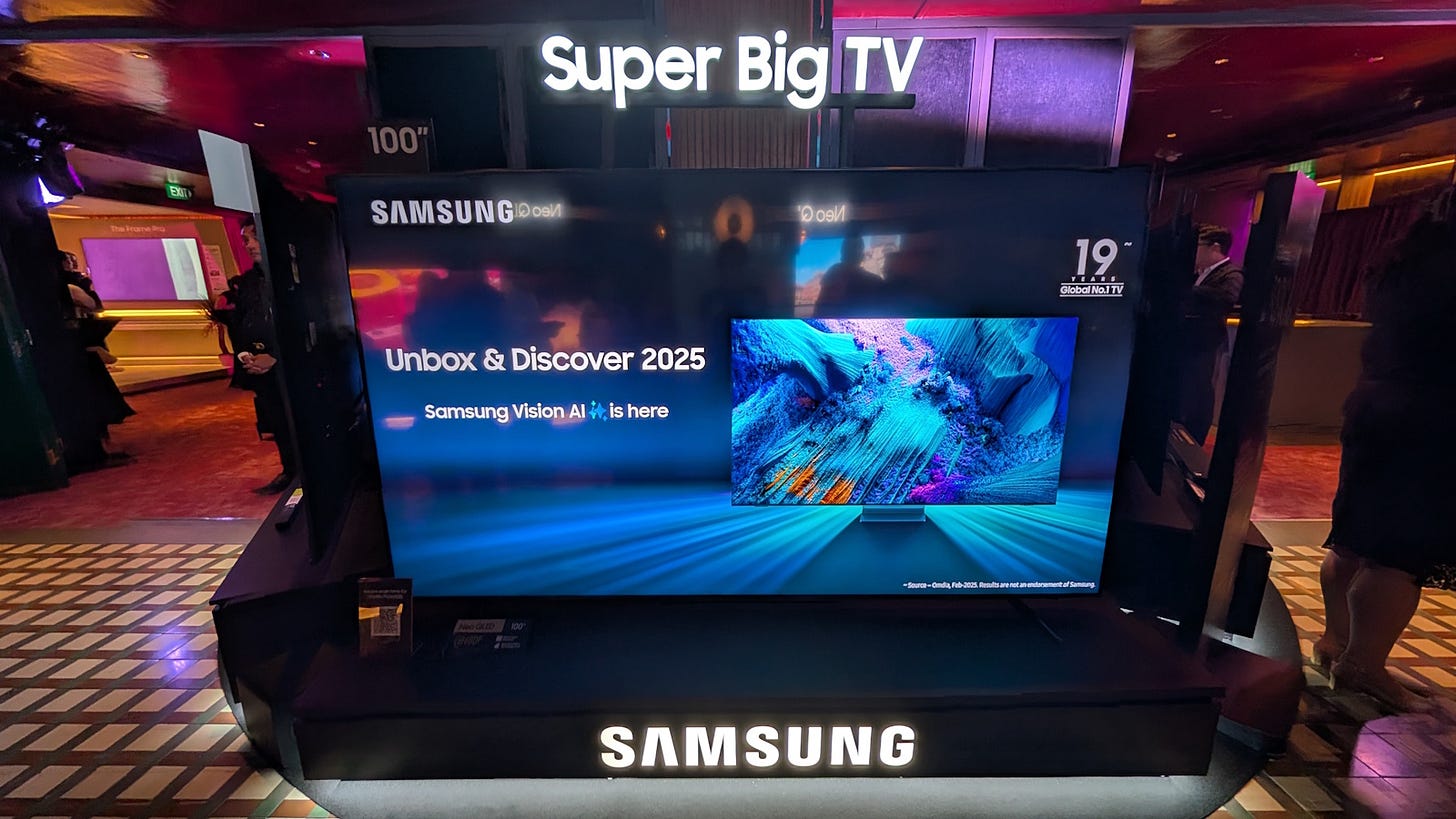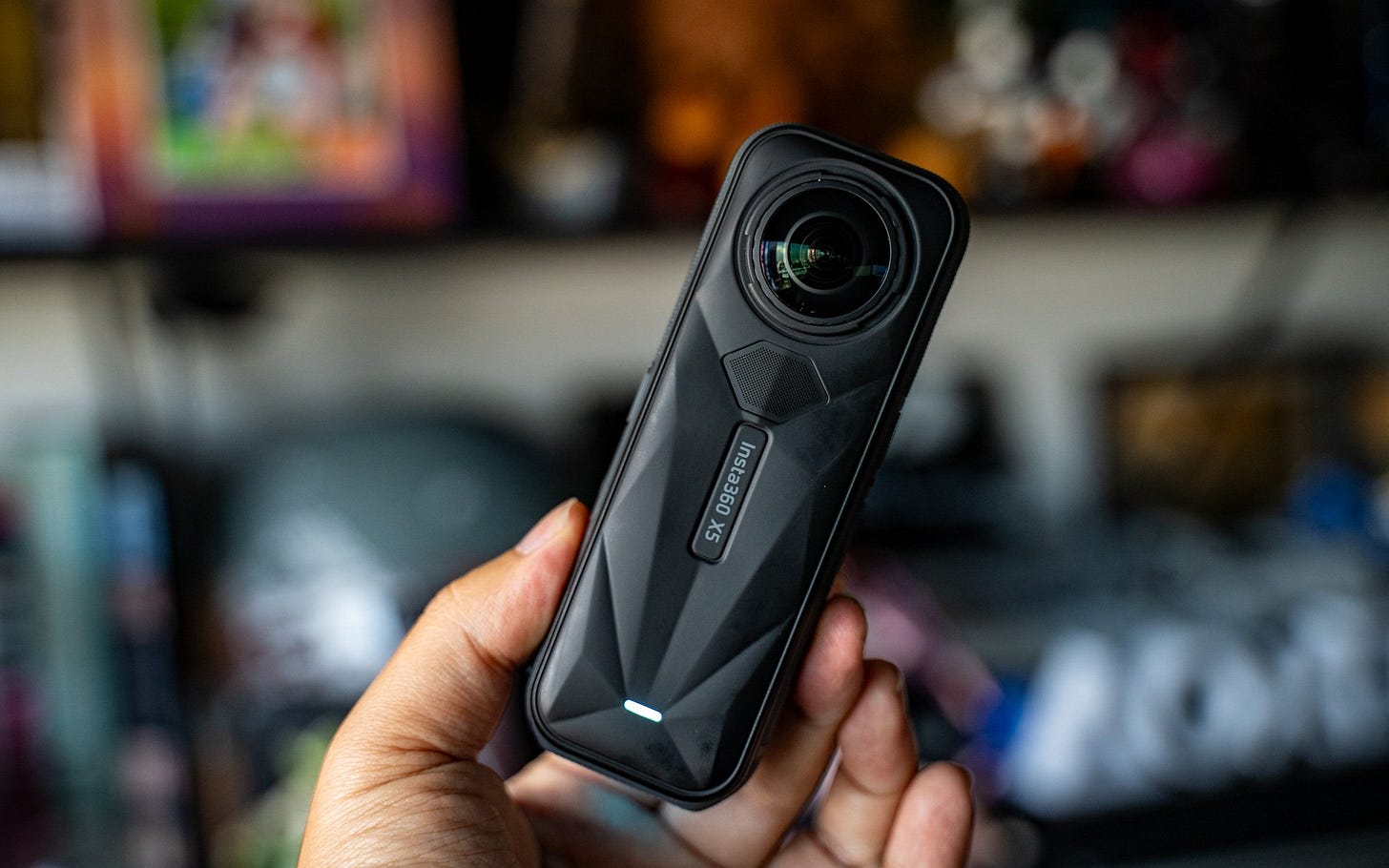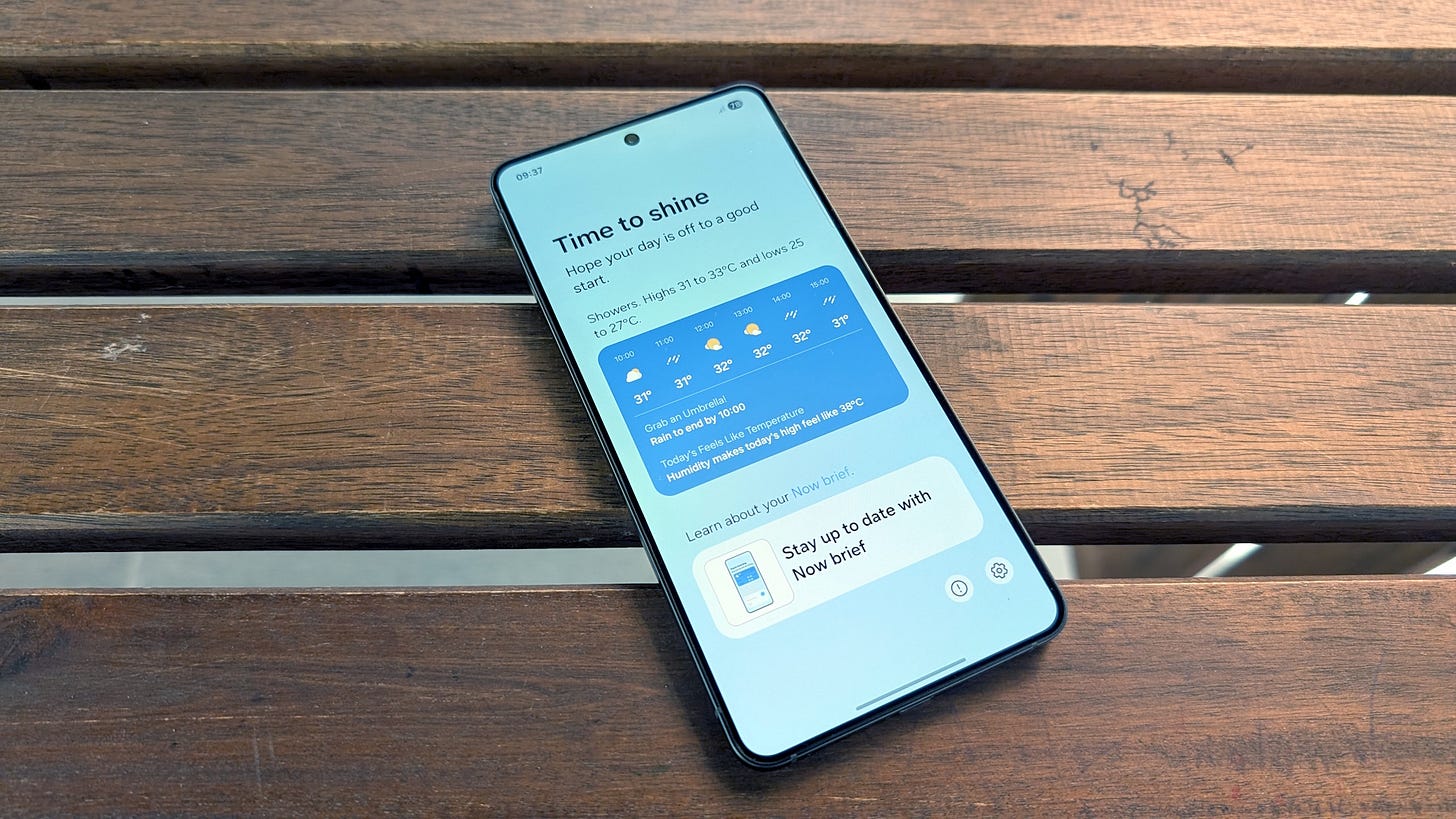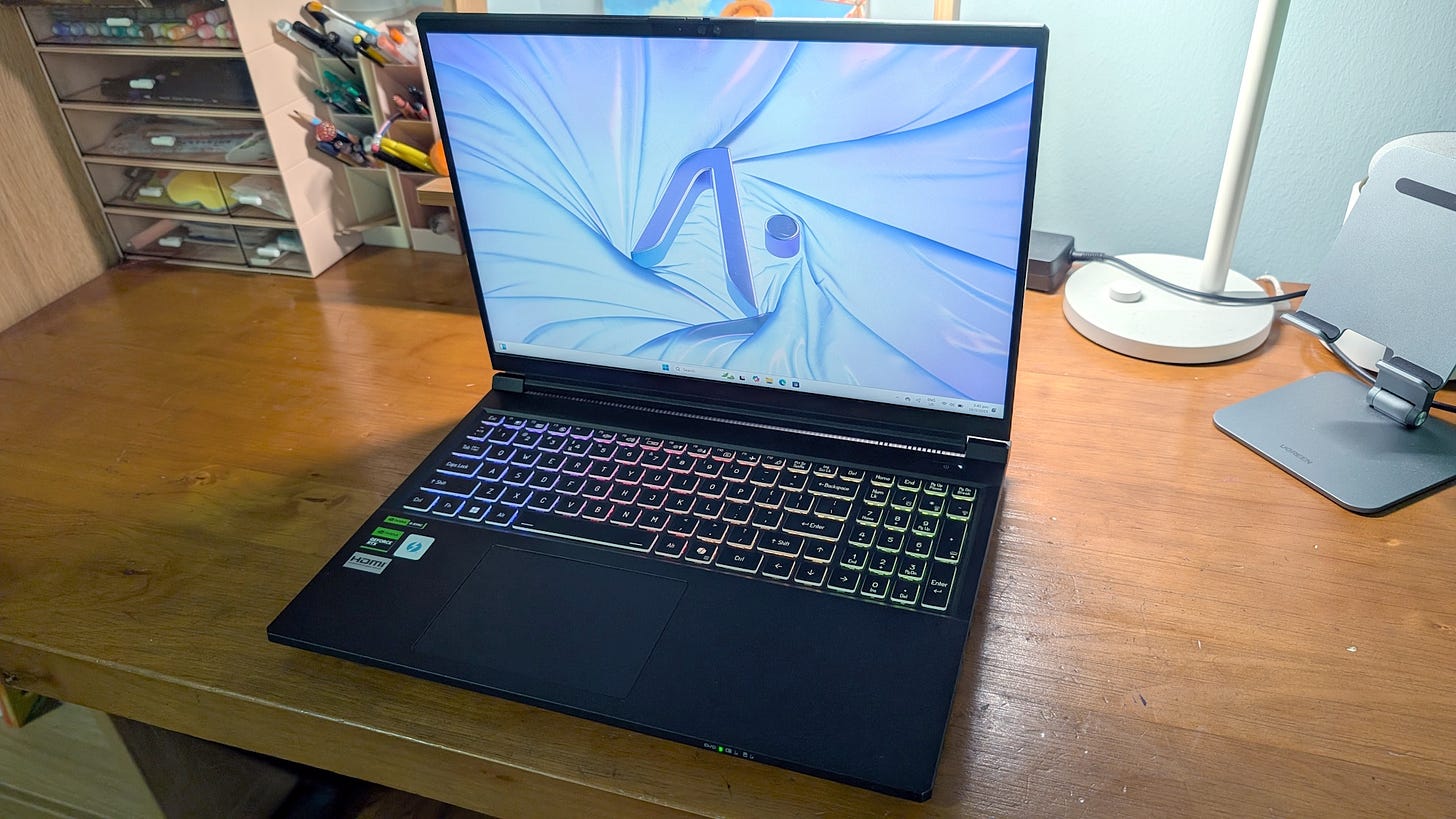I had an epiphany the other day at a local Samsung event showcasing its latest 2025 TV and soundbars: We don’t need TVs to be refreshed yearly. I had this sudden realisation while listening to a Samsung presenter talk about the refresh rate for its new TV increasing from 144Hz to 165Hz.
I couldn’t help but roll my eyes then. These refresh rate numbers will have zero impact for any user. The latest game consoles only support up to 120Hz. Only a tiny minority of users will hook up high-end PCs to their TVs to get the advertised 144Hz or 165Hz. It seemed that even TV makers are struggling to make meaningful improvements to their TVs each year.
Of course, there are exceptions. The OLED Glare Free tech that Samsung introduced last year to its flagship S95D OLED TV was a significant upgrade. And the company is expanding this impressive anti-glare layer — with a new 2.0 version with a deeper black — to three more models this year, which is great news for those of us living in sunny Singapore.
But for the most part, the hardware in the new 2025 TVs is basically similar to last year’s. Hence, Samsung has to talk up the AI features, the Samsung Knox security, the hand gesture controls, the ability to sing karaoke on the TV with your Galaxy phone as the microphone, and more. In short, the ecosystem around the TV.
Instead of forcing a yearly refresh, I feel TV makers should follow the example of audio firms. Sony’s latest WH-1000XM6 headphones just came out this month, three years after the previous iteration. Apple’s AirPods Max only got a minor refresh after four years. There are countless other examples in the audio business. I’m not optimistic, though.
Now if you’re really looking for a new TV, the best TV deals are for older models, if you can still find them. Here’s a list of 2024 TVs that you should be looking at.
This week, we tried out possibly the best 360 camera in the market now, the slimmest smartphone from Samsung, and an affordable mid-range gaming laptop from local brand Aftershock.
The Insta360 X5 is probably the best 360-degree camera you can get right now. It’s a huge upgrade over the previous model. Not only does it takes excellent videos and photos up to 8K and 11K respectively, it comes with replaceable lenses. Meanwhile, the excellent software can even edit out the selfie stick, and offers various features, such as slow motion and timelapse videos.
The Samsung Galaxy S25 Edge is not for everyone. This ultra-slim premium phone, which is just 5.8mm thick, offers flagship performance, and an excellent, top-tier display. There are some trade-offs such as poorer battery life than the Galaxy S25+ and S25 Ultra, as well as the lack of a telephoto camera. But some users may be perfectly fine with these compromises.
If you’re looking to maximise a limited budget for a gaming laptop, the Aftershock MX-16 offers a mid-range configuration with a GeForce RTX 5070 Ti graphics chip that will comfortably run all games at the appropriate settings. Prices start at S$2,699, which is relatively affordable. It’s also fairly portable at around 2.3kg for a 16-inch laptop.







